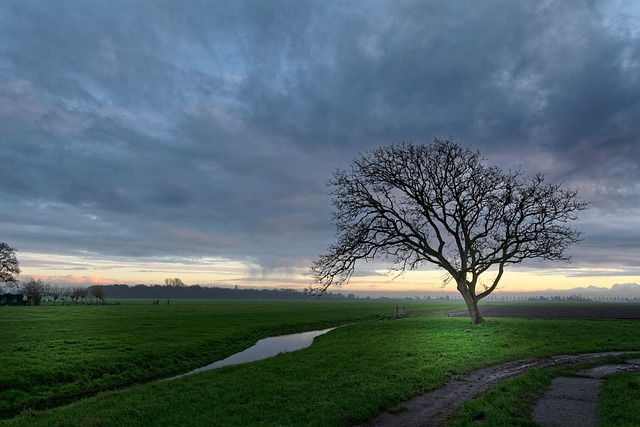“In the aftermath of storms, Anderson, SC residents often face the challenge of damaged trees and branches. Understanding storm damage and its impact on trees is crucial for maintaining your property’s value. This article explores why prompt tree trimming is essential for enhanced curb appeal and safety. We’ll guide you through the step-by-step process of safe branch removal and offer tips for effective post-removal care, ensuring your landscape recovers and prevails.”
- Understanding Storm Damage and Its Impact on Trees
- Why Tree Trimming is Essential for Curb Appeal
- The Step-by-Step Process of Safe Branch Removal
- Tips for Effective Post-Removal Care and Prevention
Understanding Storm Damage and Its Impact on Trees
After a storm, it’s common to see trees and branches that have sustained damage. Strong winds and heavy rainfall can cause significant stress on landscapes, leading to broken limbs, uprooting, and other structural issues. Understanding the impact of storm damage is crucial for maintaining the health and beauty of your property, especially when it comes to tree trimming for improved curb appeal in Anderson, SC.
Identifying storm-damaged trees early can help prevent further decay and potential hazards. In Anderson, SC, professional tree care services offer expert assessments and safe removal of damaged branches or entire trees. Proper tree trimming not only enhances the aesthetic appeal of your landscape but also ensures the safety of your home and surroundings, as weakened trees pose a risk during subsequent weather events.
Why Tree Trimming is Essential for Curb Appeal
Tree trimming plays a pivotal role in enhancing the curb appeal of your property, especially in a competitive real estate market like Anderson, SC. Well-maintained trees and proper branch removal not only contribute to the overall aesthetics but also ensure the safety of your home and surroundings. A neatly trimmed tree can instantly elevate the look of your yard, making it more inviting and desirable to potential buyers or guests.
By regularly trimming trees, you remove dead or diseased branches, allowing for better air circulation and sunlight penetration. This process promotes healthier tree growth and prevents the spread of pests or infections. Furthermore, strategic pruning helps maintain the desired shape, size, and density of the tree, ensuring it complements your landscape design while adding value to your property in Anderson, SC.
The Step-by-Step Process of Safe Branch Removal
When a storm damages your tree, removing branches safely and efficiently is crucial for both the health of the tree and maintaining your property’s curb appeal. Here’s a step-by-step guide to ensure safe branch removal in Anderson, SC, enhancing your landscape’s beauty.
First, assess the damage from the safety of a distance, identifying the branches that need to be cut. Next, gather the necessary tools: pruners for smaller branches, saws for larger ones, and protective gear including gloves and eye wear. Before you begin, check local regulations regarding tree trimming in your area to ensure compliance with Anderson, SC’s guidelines for improved curb appeal. Then, start cutting from the inside out, making clean cuts just outside the branch collar (the swollen area where the branch meets the trunk). Finally, remove any debris promptly to prevent further damage and maintain a safe workspace.
Tips for Effective Post-Removal Care and Prevention
After storm-damaged trees and branches have been safely removed, proper care and prevention techniques are crucial for maintaining your property’s beauty and safety. One effective strategy is regular tree trimming, which not only enhances curb appeal in Anderson, SC but also reduces the risk of future damage. Schedule professional tree trimming services to address weak limbs, overgrowth, and potential hazards.
Additionally, implement preventive measures like removing dead wood promptly and ensuring proper drainage around trees. These steps can significantly reduce the impact of future storms, protecting your property and surrounding landscapes. Prioritize post-removal care to foster healthier trees and mitigate long-term damage.
